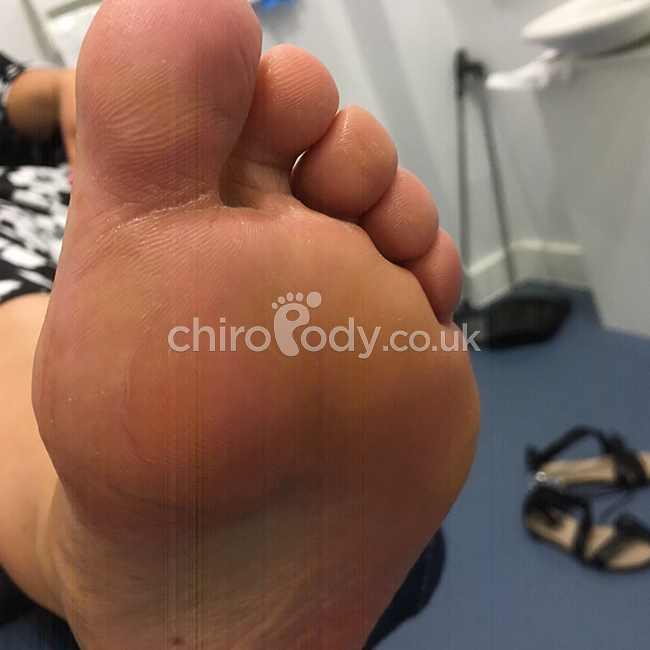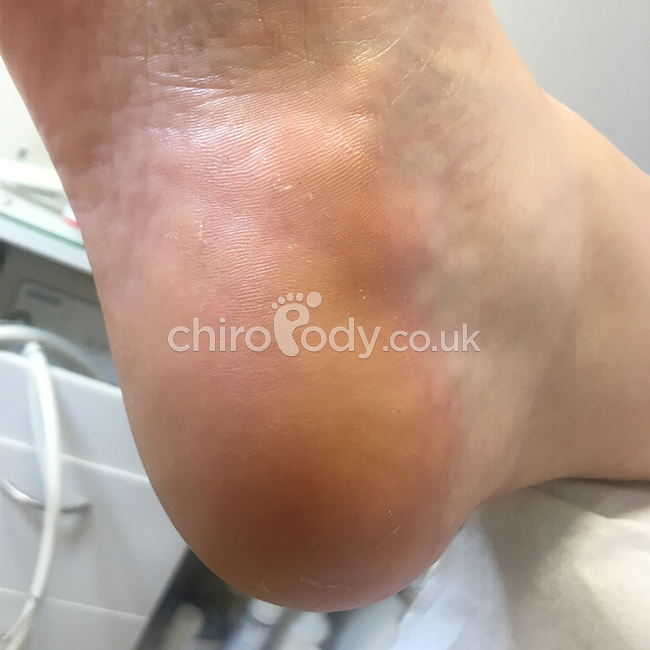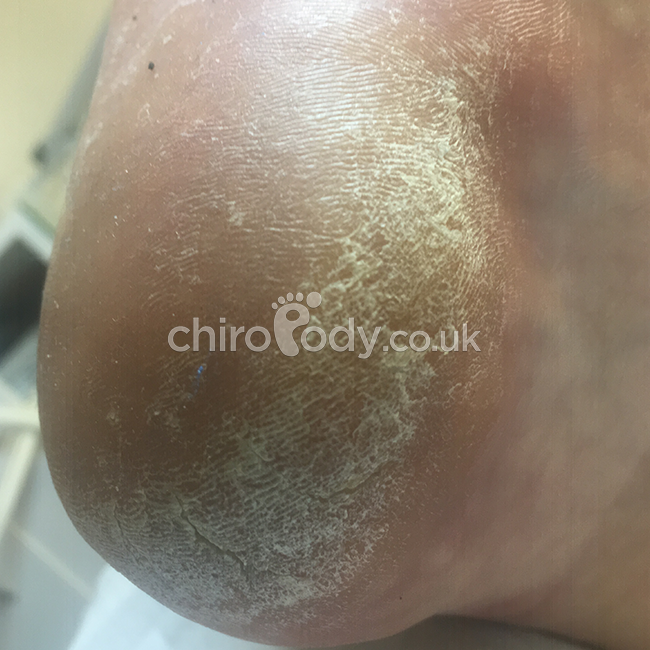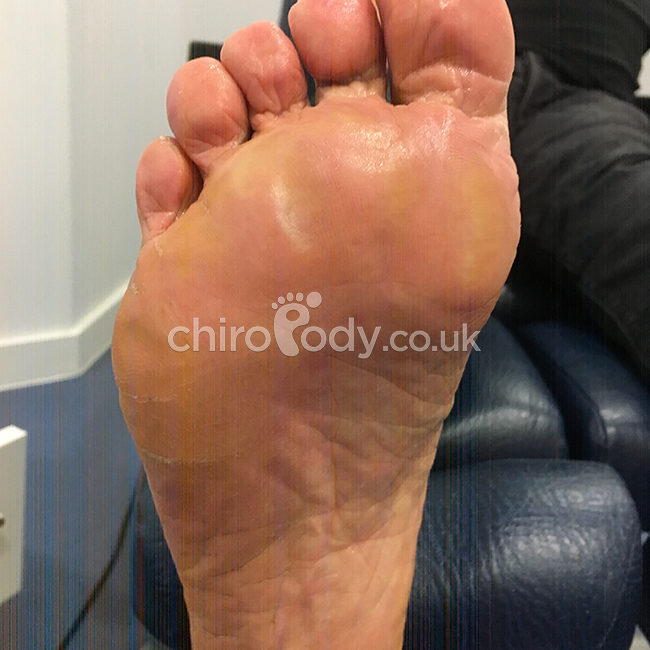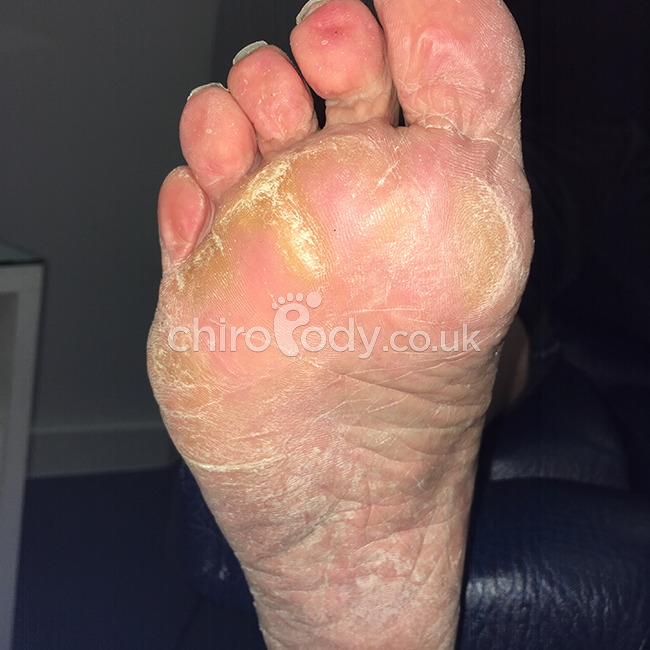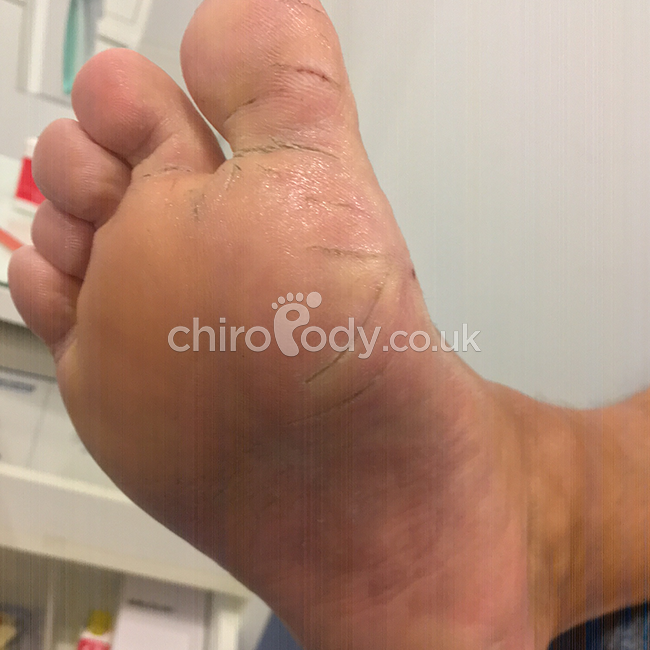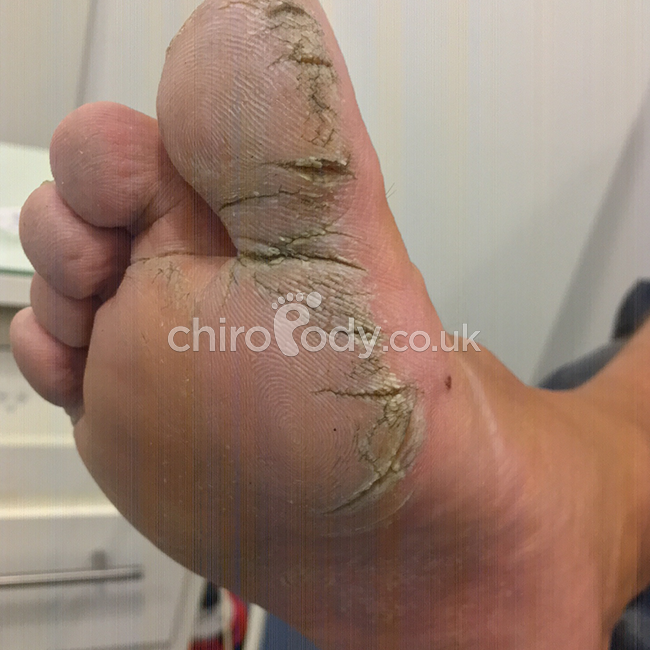Dry skin
What is dry skin?
It is very common to get dry skin; most people will experience it at one time or another, especially on the bottom of the feet. Dry skin isn’t serious, but can be uncomfortable and unsightly. Dry skin is usually characterised by a flaking/peeling appearance of the skin, on the foot, especially round the heels. Dry skin may lead to itchiness, soreness, and a tightness feeling.
What causes dry skin?
The skin contains gland which secrete oil, these gland naturally keep the skin supple and hydrated. The skin on the bottom of the feet do not contain oil glands, therefore this contributes to the increased risk of developing dry skin and it associated complications.
Skin that lacks moisture loses its elasticity, making it prone to split and crack, especially round the heels; a crack in the skin leaves it prone to infection as it acts as a portal of entry. There are many intrinsic and extrinsic factors which can contribute to someone experiencing dry skin anywhere on the body. Some common causes of dry skin are:
- Extrinsic factors
- Use of certain soaps
- Footwear
- Cold weather
- Medications
- Intrinsic factors
- Medical conditions; diabetes, peripheral arterial disease, skin conditions; psoriasis, eczema, scleroderma
- Aging
- Infections: fungal infection
What are the signs and symptoms of dry skin?
- Itching
- Flaking
- Crack in the skin
- Bleeding
- Fissures
- Particularly around the heels
Benefits of podiatry for dry skin?
The following benefits can be achieved following podiatric intervention for dry skin on the foot.
- Improved appearance of the skin
- Reduction of discomfort
- Reduce risk of recurrence
- Advice with treating any associated skin infection
- Improvement in skin condition
Podiatry treatment for dry skin
The podiatrists here at Liverpool Podiatry can help with your dry skin, painlessly removing any associating calluses with a scalpel blade. A podiatrist can devise a treatment and management plan for you, and offer advice with regards to keeping your feet hydrated and healthy. Often this includes a review of the footwear that is commonly worn, along with advice regarding the use of soaps, ointments or emollients. Following treatments may be recommended:
- Treatment of fungal infections
- Use of emollients
- Advice regarding use of soap and bath products
- Removal of excess skin
- Reduction of skin fissure
- Footwear advice
- Heel sleeves
- Treatment of cracked heels
- Specialised socks
- Wet dressings
If you have a problem with your foot or lower limb, and you are unsure whether or not podiatry can help you, then why not contact us. If you have any questions or would like to book an appointment then please email us at office@liverpool-podiatry.co.uk or call us on 0151 558 0099.
